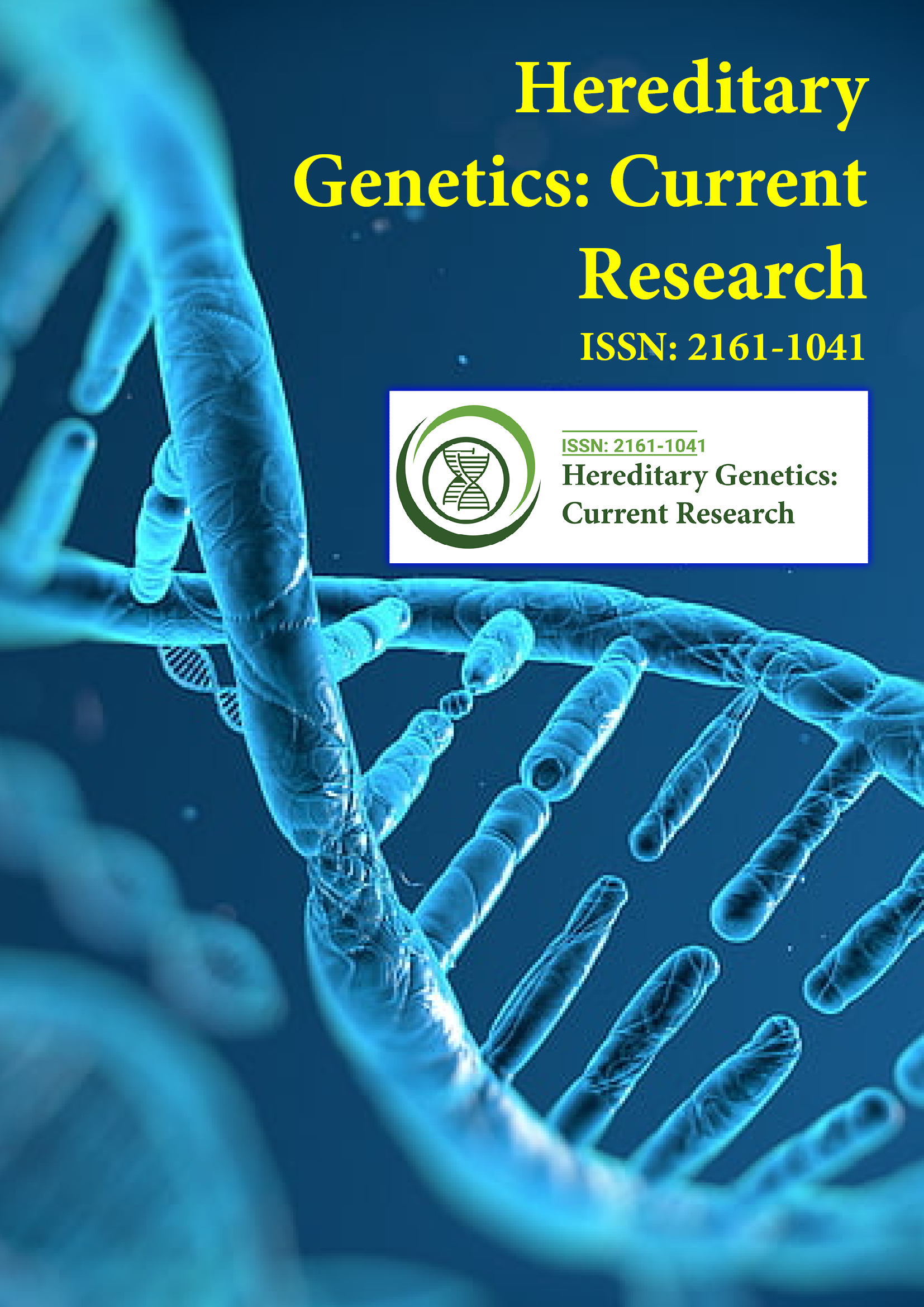குறியிடப்பட்டது
- ஜெ கேட் திறக்கவும்
- ஜெனமிக்ஸ் ஜர்னல்சீக்
- CiteFactor
- RefSeek
- ஹம்டார்ட் பல்கலைக்கழகம்
- EBSCO AZ
- NSD - ஆராய்ச்சி தரவுக்கான நோர்வே மையம்
- OCLC- WorldCat
- பப்ளான்கள்
- மருத்துவக் கல்வி மற்றும் ஆராய்ச்சிக்கான ஜெனீவா அறக்கட்டளை
- யூரோ பப்
- கூகுள் ஸ்காலர்
பயனுள்ள இணைப்புகள்
இந்தப் பக்கத்தைப் பகிரவும்
ஜர்னல் ஃப்ளையர்

அணுகல் இதழ்களைத் திறக்கவும்
- உணவு மற்றும் ஊட்டச்சத்து
- உயிர்வேதியியல்
- கால்நடை அறிவியல்
- சுற்றுச்சூழல் அறிவியல்
- நரம்பியல் & உளவியல்
- நர்சிங் & ஹெல்த் கேர்
- நோயெதிர்ப்பு மற்றும் நுண்ணுயிரியல்
- பயோ இன்ஃபர்மேடிக்ஸ் & சிஸ்டம்ஸ் பயாலஜி
- பொது அறிவியல்
- பொருள் அறிவியல்
- பொறியியல்
- மரபியல் & மூலக்கூறு உயிரியல்
- மருத்துவ அறிவியல்
- மருத்துவ அறிவியல்
- மருந்து அறிவியல்
- வணிக மேலாண்மை
- விவசாயம் மற்றும் மீன் வளர்ப்பு
- வேதியியல்
சுருக்கம்
எச்.ஐ.வி எதிர்மறை மற்றும் எச்.ஐ.வி பாசிட்டிவ் டிஃப்யூஸ் பெரிய பி செல் லிம்போமாவில் மைக்ரோஆர்என்ஏ 21 வெளிப்பாடு நிலைகள்
Phillips P, Mcgrath E, Sekar D, Sookhai R, Govender D, Mohamed Z, Zerbini LF மற்றும் Naidoo R
டிஃப்யூஸ் பெரிய பி செல் லிம்போமா (டிஎல்பிசிஎல்) என்பது பல்வேறு உருவவியல் மற்றும் மூலக்கூறு துணை வகைகளைக் கொண்ட ஒரு பன்முக நோயாகும். இது பொதுவாக வயதானவர்களுக்கும், எச்.ஐ.வி நோயால் பாதிக்கப்பட்டவர்களுக்கும் ஏற்படுகிறது. ஹான்ஸ் அல்காரிதத்தின் படி DLBCL ஆனது சாதகமான முளைப்பு மையம் (GC) துணை வகை மற்றும் சாதகமற்ற GC அல்லாத துணை வகை என முன்கணிப்பு ரீதியாக வகைப்படுத்தலாம். எச்.ஐ.வி பாதித்த நபர்களில் இந்த நோய் மிகவும் ஆக்ரோஷமாக இருக்கும். டி.எல்.பி.சி.எல் பற்றிய ஆராய்ச்சி பெரும்பாலும் எச்.ஐ.வி எதிர்மறை மாதிரிகளில் நடத்தப்பட்டது மற்றும் எச்.ஐ.வி நோயின் மூலக்கூறு வழிமுறைகளை எவ்வாறு பாதிக்கிறது என்பது இன்னும் தெளிவாகத் தெரியவில்லை. எச்.ஐ.வி எதிர்மறை மற்றும் எச்.ஐ.வி பாசிட்டிவ் டி.எல்.பி.சி.எல் நோயாளிகளில் miR-21 இன் வெளிப்பாடு நிலைகளை ஒப்பிட்டுப் பார்க்க நாங்கள் ஒரு ஆய்வை மேற்கொண்டோம். DLBCL இன் எச்.ஐ.வி நேர்மறை நிகழ்வுகளில் miR-21 வெளிப்பாடு அளவுகள் அதிகமாக இருப்பதாக எங்கள் முடிவுகள் தெரிவிக்கின்றன. எச்.ஐ.வி எதிர்மறை மற்றும் நேர்மறை நிகழ்வுகளில் டி.எல்.பி.சி.எல் துணை வகைகளுக்கு இடையில் miR-21 அளவுகளில் புள்ளிவிவர ரீதியாக குறிப்பிடத்தக்க வேறுபாட்டை நாங்கள் கவனிக்கவில்லை. எச்.ஐ.வி எதிர்மறை நோயாளிகளுக்கு சாதகமான முன்கணிப்பு உயர் மைஆர்-21 வெளிப்பாட்டுடன் தொடர்புடையது மற்றும் எச்.ஐ.வி பாசிட்டிவ் நோயாளிகளில் தலைகீழ் உண்மை. முடிவில், எச்.ஐ.வி தொற்று DLBCL இல் miR-21 இன் வெளிப்பாட்டை பாதிக்கலாம் என்று எங்கள் முடிவுகள் குறிப்பிடுகின்றன. miR-21 வெளிப்பாடு நிலையின் முன்கணிப்பு முக்கியத்துவம் HIV நிலையைப் பொறுத்து வேறுபடலாம் என்பதால், HIV பாசிட்டிவ் DLBCL பற்றிய மேலதிக ஆய்வுகளின் அவசியத்தை இது எடுத்துக்காட்டுகிறது. முக்கிய வார்த்தைகள்: பி-செல் லிம்போமா; மைக்ரோ ஆர்என்ஏ; முன்கணிப்பு; எச்ஐவி; miR-21; டிஎல்பிசிஎல் அறிமுகம் டிஃப்யூஸ் லார்ஜ் பி செல் லிம்போமா (டிஎல்பிசிஎல்) என்பது ஹாட்ஜ்கின் அல்லாத லிம்போமாவின் (என்ஹெச்எல்) மிகவும் பொதுவான துணை வகையாகும், இது அனைத்து என்ஹெச்எல்லில் 30% ஆகும் [1]. இந்த நோய் உருவவியல் மற்றும் மூலக்கூறு மாறுபாடுகளுடன் [2,3] குறிப்பிடத்தக்க பன்முகத்தன்மையைக் காட்டுகிறது, இது சிகிச்சையளிப்பது கடினம். டிஎல்பிசிஎல் ஹான்ஸ் அல்காரிதம் படி முன்கணிப்பு முக்கியத்துவத்துடன் இரண்டு ஹிஸ்டாலஜிக்கல் துணை வகைகளாக பிரிக்கப்பட்டுள்ளது. ஜெர்மினல் சென்டர் (ஜிசி அல்லாதது) துணை வகையானது முளை மையமான பி செல் (ஜிசி) துணை வகையை விட மோசமான முன்கணிப்பைக் கொண்டுள்ளது [4]. எச்ஐவி ஜிபி120, மேன்னோஸ் சி வகை லெக்டின் ஏற்பிகளை (எம்சிஎல்ஆர்) வெளிப்படுத்தும் பி செல்களை இம்யூனோகுளோபுலின் கிளாஸ் மாறுதலுக்கு உட்படுத்துகிறது என்று சமீபத்திய தரவு தெரிவிக்கிறது. எச்.ஐ.வி நோய்த்தொற்றில் நாள்பட்ட பி-செல் செயல்படுத்தல் பி-செல் தூண்டும் சைட்டோகைன்களின் உற்பத்தியால் இயக்கப்படுகிறது, அவை gp120 பிணைக்கப்பட்ட மோனோசைட்டுகளால் சுரக்கப்படுகின்றன [6]. இந்த சைட்டோகைன்கள் B செல்களின் மேற்பரப்பில் MCLRகளை அதிகப்படுத்துவதன் மூலம் செயல்படுகின்றன, இதனால் நாள்பட்ட B செல் செயல்படுத்தலை உருவாக்குகிறது [5]. எனவே, எச்.ஐ.வி நோயால் பாதிக்கப்பட்டவர்கள் பி செல் என்ஹெச்எல் [7] வளரும் அபாயத்தில் உள்ளனர். டிஎல்பிசிஎல் என்பது எச்ஐவி பாதிக்கப்பட்ட நபர்களில் கண்டறியப்பட்ட மிகவும் பொதுவான என்ஹெச்எல் ஆகும் [8,9]. மைக்ரோஆர்என்ஏக்கள் குறியிடப்படாத ஆர்என்ஏ மூலக்கூறுகள் ஆகும், அவை இலக்கு மரபணுக்களின் வெளிப்பாட்டை அமைதிப்படுத்துகின்றன [10]. 3'UTR இலக்கு எம்ஆர்என்ஏ உடன் மைக்ரோஆர்என்ஏவை அபூரண அல்லது சரியான இணைப்பதன் மூலம் மரபணு அமைதி அடையப்படுகிறது, இதன் விளைவாக முறையே மொழிபெயர்ப்பு அல்லது சீரழிவு தடுக்கப்படுகிறது [11,12]. அவை நீண்ட எழுத்துகளாக எழுதப்பட்டுள்ளன